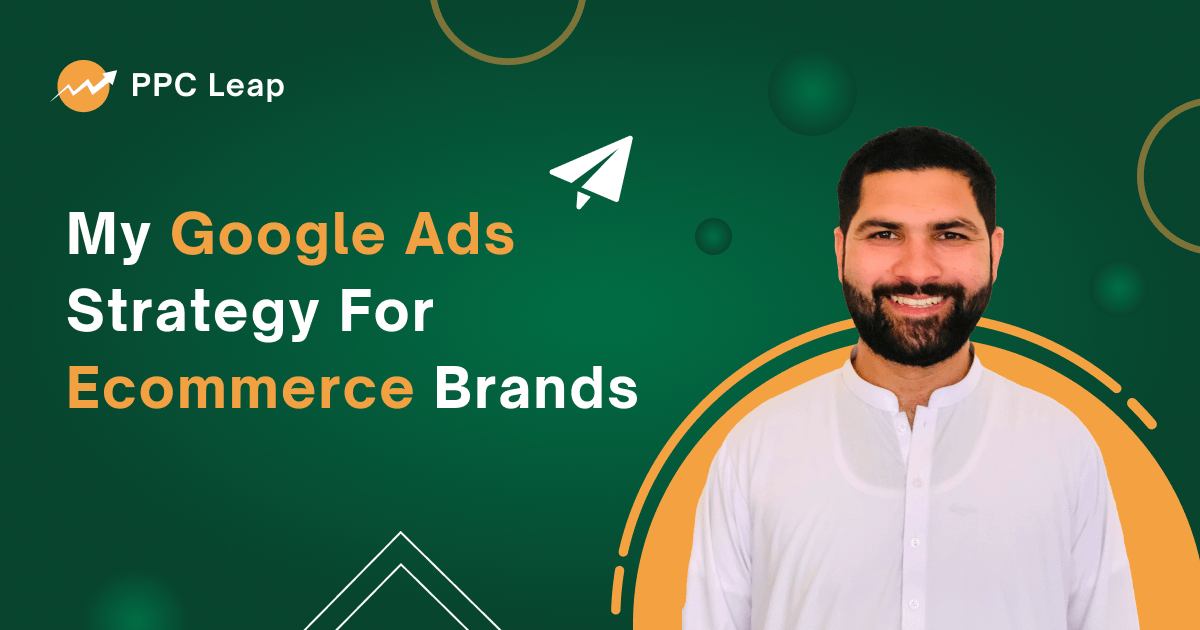
Every Google Ads expert has their own way of running campaigns. In this blog, I’ll share the strategy I use to run profitable Google Ads accounts for ecommerce brands, especially when you’re just starting out or scaling.
But before anything else, let’s talk about something more important than ads.
Step 1: Make Sure There’s Product-Market Fit
Before you run ads or spend any money, ask these questions:
- Do people really want your product?
- Is your pricing competitive?
- Is the product quality good?
- Is it better than your competitors?
Do a quick product-fit analysis. Ads will never fix a product that people don’t want.
Step 2: My Campaign Types
- Here are the campaign types I use for ecommerce accounts:
- Search Ads (Brand and Generic)
- Performance Max
- Page Feed only
- Feed only
- Asset-based
- Full asset setup
- Standard Shopping Ads (Brand and Generic)
- Demand Gen (Remarketing + Generic)
- Video Ads (for remarketing)
- Display Ads (for remarketing)
Step 3: Campaign Type Priority
When I launch or manage campaigns, this is the usual order of priority:
- Shopping Ads (Standard or PMax Feed Only)
- PMax Asset-Based (using Page Feed)
- Search Ads (Brand and Generic) or AI-powered Max Search
- Demand Gen (Remarketing + Generic)
- Video Ads (mainly for remarketing)
- Display Ads
Step 4: Budget Allocation
I keep the budget allocation simple and result-driven.
- 70% goes to Shopping Ads
- 30% goes to:
- Search (Brand + Generic)
- PMax (Page Feed + Assets)
- YouTube Remarketing (if I have video creatives)
- Demand Gen (Remarketing + Generic)
If I don’t have video content for YouTube, I move that budget to the campaign type that brings the best results.
Step 5: Bidding Strategies
Here’s what I use based on campaign type:
- Brand Search & Shopping: Manual CPC
- YouTube Remarketing: CPV (Cost Per View)
- Demand Gen (Smart bidding with or without target)
- Generic Shopping & Search: tROAS (Target ROAS)
- If using a low ROAS target, I increase it slowly over time.
- If using a high ROAS target, I wait for at least 30 conversions. If scaling doesn’t happen, I reduce the target to a more comfortable level so the campaign starts spending and optimizing.
Step 6: Account Structure
Account structure depends on the account’s history and stage.
If it’s a new account:
- Start with consolidation (everything in one campaign)
- Once that campaign performs well and starts scaling:
- Shift to segmented or performance-based structure
I don’t follow one fixed structure. It always depends on the account situation.
Here are the main structure options:
Consolidated
- Fewer campaigns and ad groups
- Best for new accounts or low-volume brands
- Easy to manage and gather quick data
- Helps campaigns learn faster
Segmented
- Separate campaigns by product categories, brand vs generic, or funnel stages
- Gives more control over budget and performance
- Ideal once you have enough data and conversions
Performance Bucketing
- Campaigns are built around performance levels, not just products
- For example: Best sellers in one bucket, low performers in another
- Helps scale what’s working while keeping control over the rest
Hybrid Structure
- Combines the best of all structures
- Example: Consolidated Shopping + Segmented Search + Performance-based remarketing
- Ideal for growing brands with mixed goals
I usually start with a consolidated structure. Once performance improves, I switch to segmented or hybrid based on what the data shows.
Step 7: Tracking Setup
To track performance properly, make sure these are set up:
Google Ads Tags
- Purchase Tag
- Dynamic Remarketing Tag
GA4 (Google Analytics 4)
Import these as secondary events:
- Add to Cart
- Checkout
- Purchase
GA4 Ecommerce Events:
More GA4 events to my traacking setup.
- view_item
- view_item_list
- select_item
- add_to_cart
- remove_from_cart
- view_cart
- begin_checkout
- add_payment_info
- add_shipping_info
- purchase
Step 8: Google Merchant Center (GMC) Optimization
Before launching any shopping campaign, do this:
Merchant Center Setup:
- Enable Trusted Store Badge
- Add clear shipping time and shipping fee
- Try to offer fast and low-cost shipping
Feed Optimization:
Make sure the following attributes are optimized in your product feed:
- Product Title
- Product Description
- Product Type
- Product Category
- GTIN
- Price
- Brand
- Image
- Lifestyle Image (if available)
- Additional Images
- Color
- Age Group
- Gender
- Size
- Material
- Product Highlights
- Product Details
If possible, add product bundles to the feed.
Promotions:
- Add new customer discount promotions inside Merchant Center
Step 9: Beyond Google Ads: Fix What Happens After the Click
Google Ads can bring traffic. But if the website experience isn’t right, people won’t buy, no matter how good your ads are.
Before scaling your ad budget, make sure your website supports conversions. Here’s what I look for:
Clean Navigation:
Make it easy for users to find categories, products, and key pages like shipping, returns, and contact.
Social Proof:
Trust builds conversions. Add:
- Real customer reviews
- UGC (User-Generated Content)
- Trust badges or certifications
Strong Homepage Strategy:
Your homepage should:
- Show best sellers or new arrivals
- Highlight limited-time offers
- Make navigation smooth and visual
Flash Offers & Urgency:
Use tactics like:
- Countdown timers
- “Only X left” notices
- First-time buyer discounts
This adds urgency and improves conversion rates.
Easy Checkout Experience
Reduce friction:
- Remove unnecessary fields
- Offer guest checkout
- Show clear shipping options and costs early
Final Thoughts
This is the strategy I’ve used again and again for ecommerce brands. It’s not about running every campaign type, it’s about using what works based on the product, data, and account stage.
Start simple. Track properly. Scale what works.
